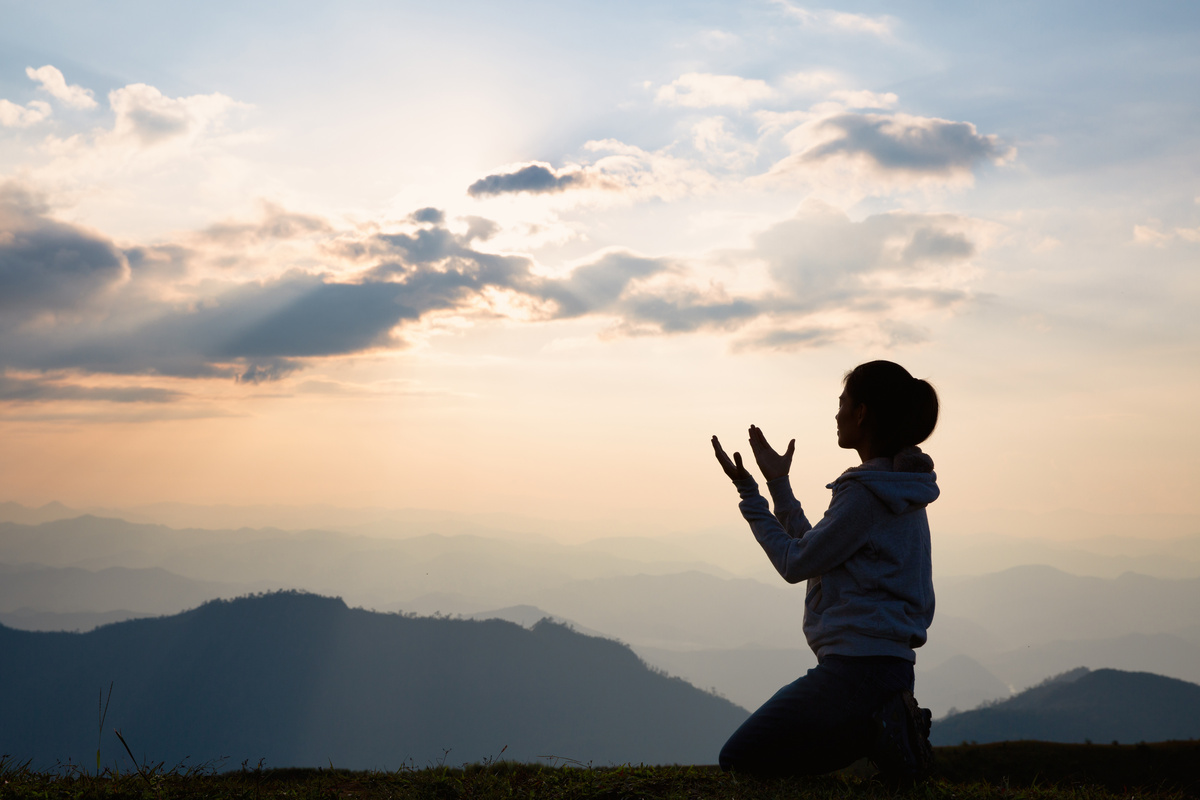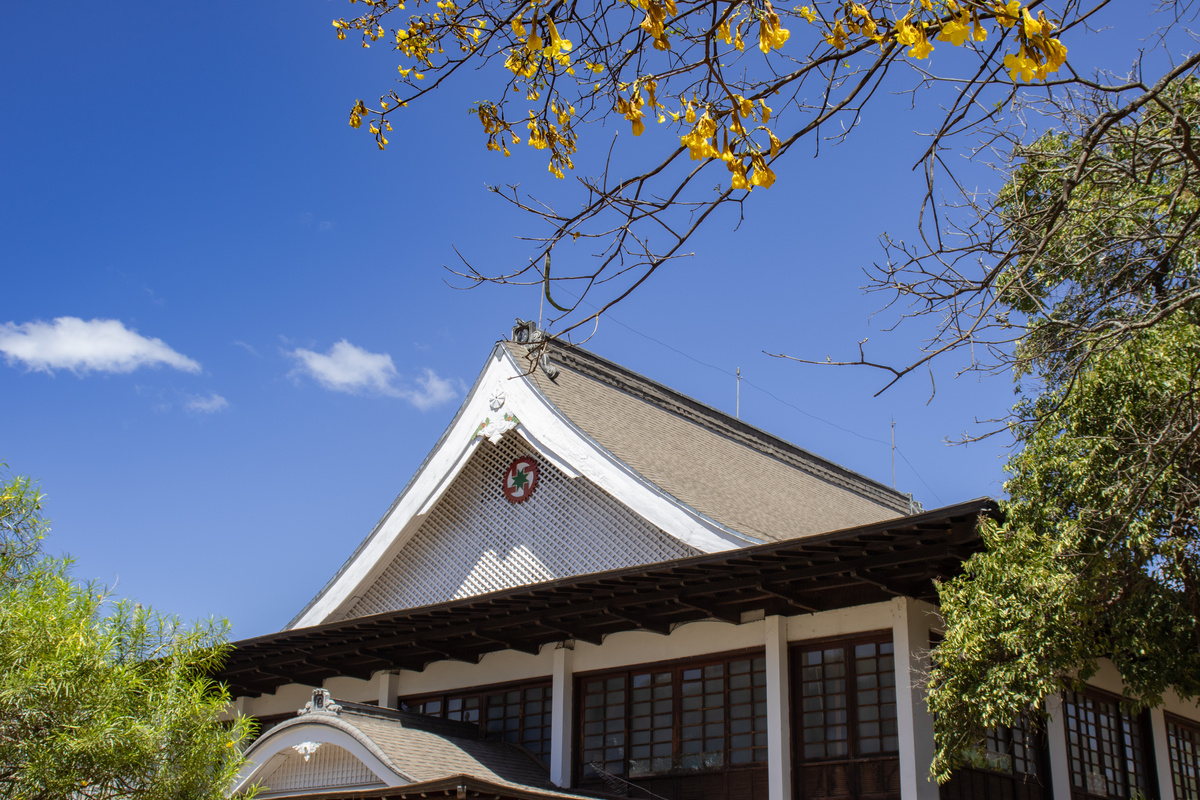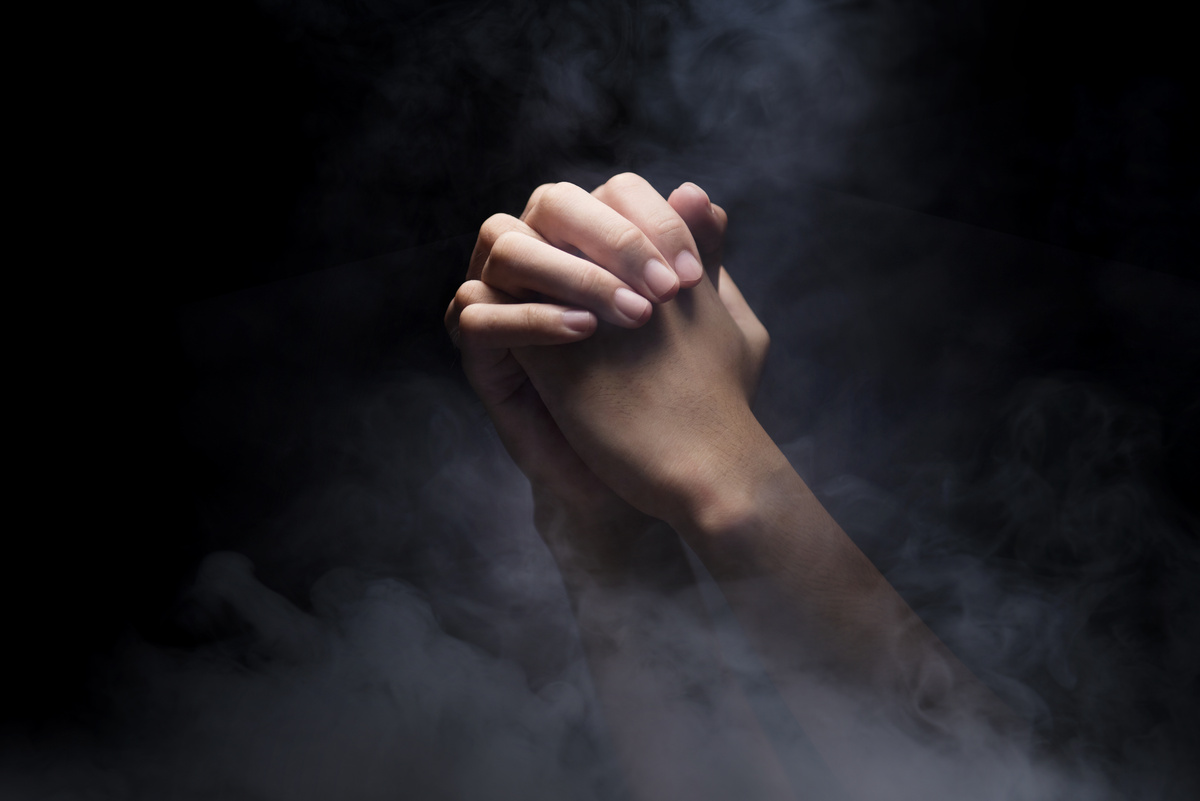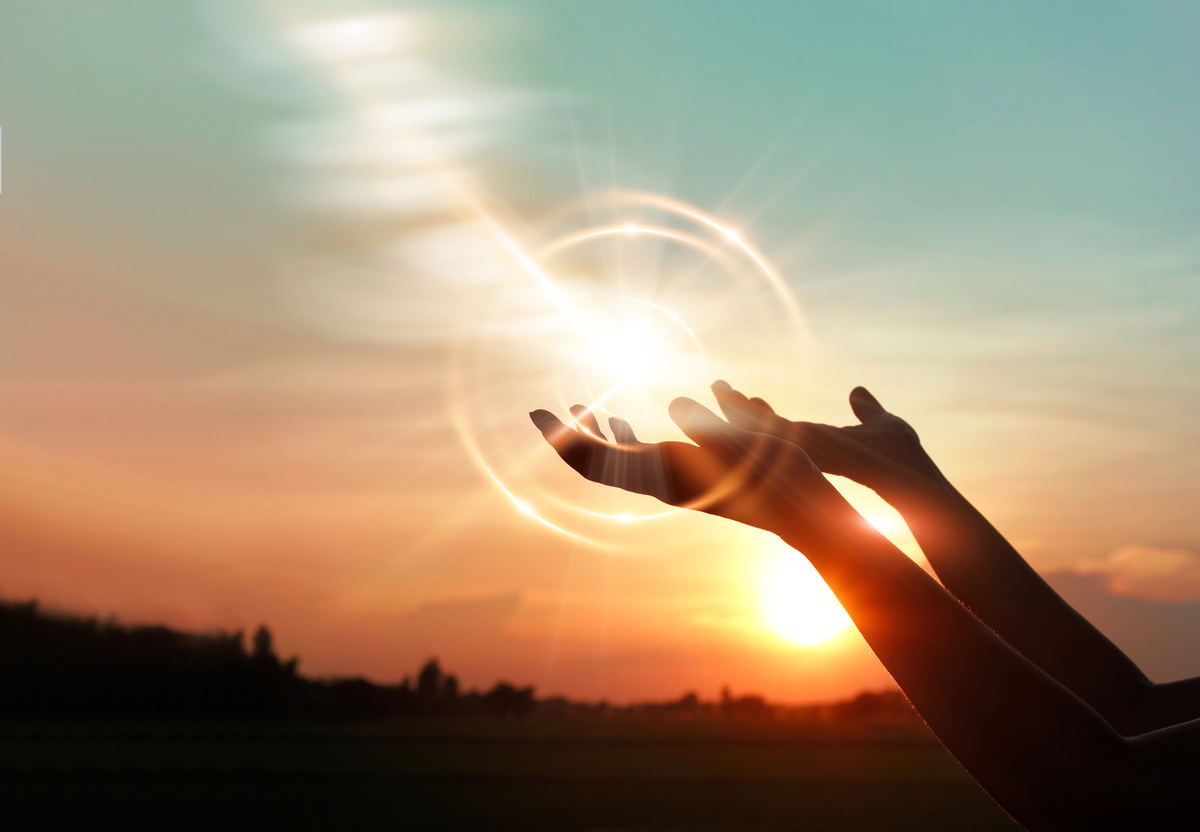Table of contents
Learn about the benefits of the Seicho-No-Ie forgiveness prayer!

The Home of the Infinite Progress, or Seicho-No-Ie, originated in Japan in 1930 and has spread its presence throughout the world. This religion arises as a response to all negativity and selfishness that governs the contemporary world, from the annulment of the ego and the exercise of gratitude.
This institution is characterized by encouraging the practices of sharing love and positivity, thus dispelling all negativity and opening the way to achieve spiritual healing. Currently, this religious institution has 1.5 million followers worldwide and a third of them are concentrated in its country of origin.
Do you want to know more about the Seicho-No-Ie prayer of forgiveness that will lead you through the path of truth and enlightenment of your spirit? Read on and find out all about this religion and its teachings!
What is Seicho-No-Ie?

The Seicho-No-Ie religion arises with the purpose of leading its followers through the path of truth, thus reaching enlightenment through the True Image that would be the maximum representation of benevolence and perfection. Understand about its origin and history in the sequence and be surprised with its doctrine!
Source
Founded in the fifth year of the Showa Era on March 1, 1930, the new religion of Japan was created by Masaharu Taniguchi, an outstanding writer of Japanese origin and sympathizer of the new American thinking.
In the year 1929, Taniguchi is believed to have been enlightened by a Shinto deity known as Suminoe-no-Ôkami, or also called Seicho-no-Ie Ôkami, Sumiyoshi, Shiotsuchi-no-Kami, or simply Kami (which means God).
In his revelations he presents the Seicho-No-Ie religion as the mother religion of all other religions. Taniguchi propagated the holy words through a periodical that bore the same name as the religion, thus spreading optimistic thinking and his belief in the True Image (or Jissô).
Jissô would thus represent the true reality of the universe and of individuals, thus becoming the essence of everything and everyone.
History
At the time Seicho-No-Ie appeared in Japan, the Japanese empire was the great regulator of religions in Japan, and Shintoism was considered a theocracy by its inhabitants. Therefore, Taniguchi and Jissô showed a certain intolerance at first.
Only after he created the Seicho-No-Ie doctrinal work known as The Truth of Life (or Seimie no Jissô), a collection of 40 books released in 1932 to which he regulated his entire religion and its history.
From that time on, his religion spread throughout the Japanese community, increasing its reputation and acceptance. Thus, the Imperial government could no longer ignore his presence, recognizing Taniguchi's institution in 1941.
What facilitated his acceptance by the Empire was also the nationalist ideology proposed in his works and known as Kokutai, which means National Community. In addition, Taniguchi would support the sacred origin of Japan that legitimizes the Japanese empire. This guaranteed imperialist support until Japan's defeat in World War II in 1945.
It was after the defeat that Taniguchi experiences new revelations from Seicho-No-Ie Kami, in his vision he confides his misinterpretation of the mythological work of Shintoism known as Kojiki (or Chronicles of the Ancient Things).
After that, Seicho-No-Ie needed to be restructured to fit into the country's new constitution, which was opposed to imperialist ideology. After a period of inactivity, Taniguchi resumed his religious activities in 1949, cultivating from then on a nationalist ideology that was gradually adhered to the country's political sphere.
It was in 1969 that the political group began to have an active voice in the Japanese government, calling themselves the Seiseiren and defining themselves as a right-wing political union, defending the idea of the traditional family and fighting ideas such as abortion. Taniguchi was opposed to the new constitution and tried to revive the patriotic values of imperialism.
This political movement on the part of Taniguchi and Seicho-No-Ie is interrupted in 1983, not ceasing to assume the nationalistic values prior to World War II. However, now it becomes more a religious than a political expression.
Doctrine
It is common that religious movements, especially in the 20th century, take advantage of the ideology of various religions. The Seicho-No-Ie is no different, relying on Shintoism, Buddhism and Christianity it uses various knowledge of these religions to substantiate its doctrine with a strong traditionalist basis.
From the beginning, Masaharu Taniguchi represented Seicho-No-Ie in his revelations as the essence of all religions, using perenialist ideas insurgent at that time as the Oomoto doctrine that revealed the great origin of the universe.
Although this new religion is strongly associated with Shintoism, it is also stated that other religions that predominated in Japan such as Buddhism and Confucianism are complementary to the ideas expounded by the doctrine of Seicho-No-Ie. This would make it in its nature a syncretic religion.
Spin-offs
Various disagreements have arisen since the release of the collection "The Truth of Life" up to the present day. The last few years have seen the most critical splits in the religion, as there is an attempt by the World President of Seicho-no-Ie to adapt its content to contemporary society in relation to social and environmental values.
However, there is an insurgent movement by a group of dissidents who claim that the current president is trying to override the ideals that underlie the Seicho-no-Ie doctrine. They believe that it is necessary to preserve the tradition established by Masaharu Taniguchi.
This split gave birth to the Association for the Study About Master Masaharu Taniguchi (Taniguchi Masaharu Sensei o Manabu Kai), which encourages the preservation of Masaharu Taniguchi's teachings, where they reproduce the original teachings written by the founder of Seicho-No-Ie.
There is yet another group of dissidents that is led by Kiyoshi Miyazawa in Japan, this group was named Tokimitsuru-Kai. Its founder is the husband of the founder's granddaughter and brother-in-law of Masanobu Taniguchi - current president of Seicho-No-Ie.
Practices
Practitioners of the Seicho-No-Ie religion are taught to recognize their true nature as the children of Kami (God), thus believing in the virtue of the consciousness of the sacred that is present within, constantly transforming their reality.
Therefore they believe that all cause and effect occurring in the present moment are born from this divine consciousness, such as: exteriorization of great talents, solution of love and economic problems, reconciliation of homes in disharmony, among others.
The fundamental practices of Seicho-No-Ie are related to:
- Prayer for the manifestation of the "Human Form".
- Shinsokan Meditation;
- Mind Purification Ceremony
- Ancestor Worship Ceremony;
- Evocation of Jissô through the Evocative Chant of God;
Weekly meetings are held at the Seicho-No-Ie Institutions where these practices are developed. Besides conferences and other events with the purpose of training the religious academies for the annual ceremony that takes place at the Hoozo shrine. In Brazil it is located at the Spiritual Training Academy in Ibiuna, SP.
Among these activities, there are some daily practices that must be performed in private environments by individuals, such as Shinsokan meditation. There are several academies spread throughout Brazil, you can resort to them to seek guidance in relation to the doctrines and to participate in weekly meetings.
Means of dissemination
The Seicho-No-Ie Organization usually divulges its information through doctrinal books, mainly the collection "The Truth of Life". There are also periodical articles that are destined to the public that follows the Associations of the Institution, which are:
- Circle of Harmony Journal.
- Happy Woman Magazine;
- Fonte de Luz Magazine;
- Querubim Magazine;
- Ideal World Magazine;
You can also find more information about this religion through social networks, the Association's official website, blogs and videos on Youtube.
Internal organisation
The world headquarters, founded by Masaharu Taniguchi, of Seicho-No-Ie, is located in the city of Hokuto, Japan. The institution is managed by this Japanese headquarters and it is through it that the dialogue regarding expansion planning and foundations of new headquarters around the world takes place.
This centralization exists as a way to control the contents to be disclosed in the Institution's official channels around the world, seeking to establish isonomy in relation to the publications and language adaptations so that the Seicho-No-Ie doctrine is not altered.
Those who seek to join the institution and become collaborators of the "Sacred Mission" must spread Masaharu Taniguchi's doctrine and contribute financially so that the work of spreading the religion continues. Soon, they cease to be sympathizers and become effective members of the Institute.
The Seicho-No-Ie Institution has a global reach, being present in several countries such as USA, Brazil, Peru, Angola, Australia, Canada, Spain, among others. In Brazil, there are several headquarters spread throughout the states, the main one being in São Paulo, in the neighborhood of Jabaquara.
The Seicho-No-Ie prayer

In the following reading, we will teach you the Forgiveness Prayer written by Taniguchi. You should read it daily, so that Kami can work on your life and your choices in order to guide you on the path of truth. Follow the next steps and learn more about the Seicho-No-Ie prayer.
What the Seicho-No-Ie Prayer is for
The prayer for forgiveness is used to relieve the pain and resentment that oppress our hearts. In Seicho-No-Ie it is considered the first step in the process of spiritual evolution, helping to release the hurts that affect your physical and spiritual well-being.
When to pray the prayer of forgiveness?
So that we can release our hurts, pains and resentments that impregnate our soul and oppress our heart daily. The Seicho-No-Ie prayer of forgiveness should be done every day, so you will feel free from all the maladies that affect your body, your soul and your mind.
How to pray the Seicho-No-Ie prayer?
For the prayer to work your forgiveness must be sincere, for it is only by believing in the truth that you will be able to let go of the wounds caused in your being. If you find it difficult to release these hurts, then it will be necessary to reflect on the reasons that lead you to hold a grudge so that you do not perpetuate this cycle of violence.
Only pray after examining your inner problems and when you feel ready to forgive those who have offended you. In this way, you will be able to free yourself and continue in your process of spiritual evolution.
Seicho-No-Ie Forgiveness Prayer
The following is the sequence of phrases that define the prayer of forgiveness described in the collection "The Truth of Life":
"I have forgiven you and you have forgiven me; you and I are one before God.
I love you and you love me too; you and I are one before God.
I thank you and you thank me. Thank you, thank you, thank you.
There is no longer any resentment between us.
I sincerely pray for your happiness.
Be more and more happy.
God forgives you, so I forgive you.
I have forgiven all people and I welcome them all with God's Love.
In the same way, God forgives my mistakes and welcomes me with His immense love.
God's Love, Peace and Harmony involves me and the other.
I love him and he loves me.
I understand him and he understands me.
There is no misunderstanding between us.
Those who love do not hate, do not see fault, do not hold grudges.
To love is to understand the other and not demand the impossible.
God forgives you, so I forgive you.
Through the divinity of Seicho-No-Ie, I forgive you and send you waves of love.
I love you."
Fundamental rules of Seicho-No-Ie practitioners
As in other religions, Seicho-No-Ie practitioners must respect the fundamental norms stated by Taniguchi in his doctrine. These conducts serve the purpose of guiding them to the path of truth and will assist them in their quest for spiritual evolution. Learn more about these norms in the following reading.
To give thanks for all things in the Universe
Gratitude should be in all things in the universe, this spirit should accompany you from the moment you open your eyes in the morning until bedtime. As it is taught to brides in the School of Brides, in which girls should feel gratitude for the most insignificant events in life.
Spiritual awakening begins in this process of gratitude, because it is understood by Seicho-No-Ie that we should not imprison ourselves to the spectacular events of life. These events are punctual, therefore the small habits that accompany us each day are the ones to be grateful for.
Life is made of ordinary facts, so the feeling of gratitude will be associated with these facts, and by exercising gratitude for them we will be in a constant movement of liberation from sorrow and resentment for what we do not have. Be truly grateful and you will forget the negative feelings that surround you.
Conserving natural feeling
For Seicho-No-Ie, natural sentiment is defined by the number zero, or the circle. You will reach this position when you are able to free yourself from misfortunes, illnesses, and difficulties that arise in your life, because any problems take you away from this position of natural sentiment.
It is only through reflection and gratitude that you will be able to preserve your natural feelings and attain perfection in your life, for they will guide you along the path of truth, past all unhappiness, and back to your natural feelings.
Manifesting love in every act
Manifesting love is related to the gesture of gratitude, from the moment we demonstrate our love in all acts we are determined to follow the path of good. Thus we awaken the positive feelings and remove all negativity from life.
In order to meet this standard you will need to exercise self-love and the five love languages which are:
- Words of affirmation;
- Dedicate your time;
- Gift the one you love;
- Help your neighbor;
- Be affectionate.
Be considerate of all people, things and facts
The attention will only be useful to the next from the moment you stop observing their negative parts. Be considerate of all people, things and facts, but always attentive to the good and the positive parts that is what really matters for your path.
But for this to happen, it will be necessary to eliminate your ego and open yourself up to forgiveness and gratitude. In this way you will become capable of doing good in your life and in others, and will then advance along the path to enlightenment.
Always see the positive sides of people, things and facts
By exercising gratitude you will feel your life fill with positivity. This behavior will change your perception about people, things and facts, allowing you to always see the positive parts of people and freeing yourself from the negativity of the world.
Totally annul the ego
The Shinsokan meditation and the prayer of forgiveness will help you to totally nullify the ego, opening your path to the positivity of life and making you more considerate and loving of everyone and everything. Soon, you will feel good about yourself and be on the path of truth until you reach your enlightenment.
To make human life a divine life and to go forward always believing in victory
To turn your earthly life into a divine life it will be necessary to follow the fundamental norms of Seicho-No-Ie with wisdom and unselfishness. Remember that as humans we make mistakes, the important thing is not to blame yourself for them but to accept them as part of the process.
So you will be moving forward believing always in victory. For, you are preparing your spirit and your mind to nullify all the negativity of the world. Thus approaching the path of truth and victory.
Enlighten the mind by practicing Shinsokan Meditation every day
Through Shinsokan Meditation you will be able to tune your mind by connecting with the World and God, thus reaching the True Image of perfection and goodness. This meditation is one of the fundamental practices of Seicho-No-Ie and should be done every day.
Shinsokan means "to see, think and contemplate God", that is, the more you exercise this meditation you will be more aware of the path that will lead you to the True Image.
This exercise should be done for 30 minutes and twice a day, if you can not meet this recommendation do not worry. The important thing is to exercise the habit of meditation daily, regardless of time.
As you practice meditation, you will notice the benefits of this activity: you will become more peaceful, harmonious, calm and more aware of your routine and your body, as well as providing a state of positivity and inner peace which is very important in helping you to follow the path of truth.
Does Seicho-No-Ie prayer seek inner healing?

Yes, following the fundamental rules, the Shinsokan meditation and the Seicho-No-Ie prayer of forgiveness will direct your consciousness toward the path of enlightenment of the spirit. The exercises and rules proposed by the religion will help you become more selfless and positive toward the adversities of the world.
Taniguchi's doctrine proposes in its essence the path of good that will only be achieved through gratitude, annulment of the ego and the exercise of love. Attitudes that will remove all negativity and share the good for all, assuming the True Image of God that is perfection and benevolence. Soon, you will be in search of your inner healing.

